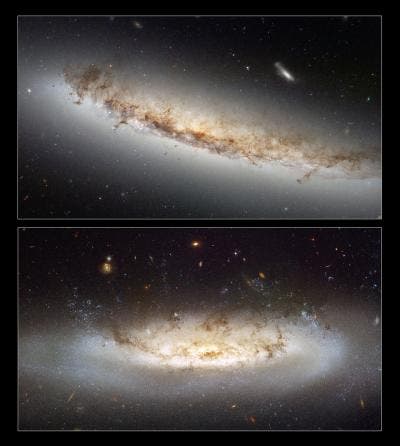
The galaxy is part of the Virgo galaxy cluster and it moves at over 10.000.000 km/h. This is just an image, but you can almost see the galaxy swirling, highlighting its dramatic state, as the halo-like gas is being forced out of it. This was caused by a number of newly formed star clusters.
The image also shows some more subtle effects of the ram pressure, such as the curved (convex) appearance of the disk and understanding it is really important because it helps researchers understand the mechanism that leads to the birth of galaxies better, and also provide important clues on how the rate of star formation is being ‘controlled’ by galaxies.





